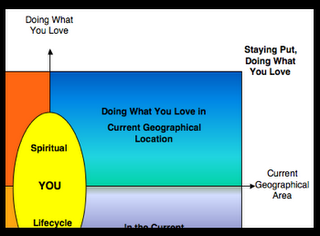Reports from the Knowledge Labs about our recent findings, research topics, and interviews with lifestyle leaders who are creating their own futures.
|
|
| |
How to stimulate your own powers of foresight. Consider the following thought provokers. Ask yourself, in these categories what are the brand new trends and forces? Which are the ones growing in importance? Which current forces are loosing their steam? Which have peaked or are reversing themselves? Which are the "wildcards" about to disrupt us in the future? POLITICAL AND TECHNICAL thought for food: Electronics, Materials, Energy, Fossil, Nuclear, Alternative, Other, Manufacturing (techniques), Agriculture, Machinery and Equipment, Distribution, Transportation (Urban, Mass, Personal, Surface, Sea, Subsurface, Space), Communication (Printed, Spoken, Interactive, Media), Computers (Information, Knowledge, Storage & Retrieval, Design, Network Resources), Post-Cold War, Third World, Conflict (Local, Regional, Global), Arms Limitation, Undeclared Wars, Terrorism, Nuclear Proliferation, Weapons of Mass Destruction, Governments (More/Less Power and Larger or Smaller Scale), Taxes, Isms: Nationalism, Regionalism, Protectionism, Populism, Cartels, Multinational Corporations, Balance of Trade, Third Party Payments, Regulations (OSHA, etc.) Environmental Impact, U.S. Prestige Abroad. SOCIAL AND ECONOMIC Food for thought:
Labor Movements, Unemployment / Employment Cycles, Recession, Employment Patterns, Work Hours / Schedules, Fringe Benefits, Management Approaches, Accounting Policies, Productivity, Energy Costs, Balance of Payments, Inflation, Taxes, Rates of Real Growth, Distribution of Wealth, Capital Availability and Costs, Reliability of Forecasts, Raw Materials, Availability and Costs, Global versus National Economy, Market versus Planned Economies, Generations: Y, X, Boomers, Elderly, Urban vs. Rural Lifestyles, Affluent vs. Poor, Neighborhoods and Communities, Planned or Organic Growth.
Got Knowledge?
|
|
| |
|
|
|
|
The Journal of 2020 Foresight
|
|
| |
|
Friday, July 21, 2006

Affluently Elite Neighborhood Secrets: What Do They Know, That I Don’t?
Chapter Four: The Tribal Territories
By Steve Howard, CKO
The Knowledge Labs
Table of Contents
Chapter One: Basecamp
Chapter Two: The Ridge
Chapter Three: The Outpost
Chapter Four: The Tribal Territories
“What about the wreckage of murder? It’s terrible. Jed killed a cop, and that’s a bummer right there, because Carmichael … Officer Carmichael … had a family, he had friends. He had a beautiful wife. Officer Carmichael is no longer on the planet. Some people think that police are evil and hippies are good, but it may not be true. There’s a gray area. He didn’t have any kids, but he did have a nice group of friends, all the other officers who worked with him.”
Neil Young & Crazy Horse “Greendale”
DOUBLE NICKEL RANCH. Two of the four scenarios for Baby Boomers in their 50s, have location in common, but they differ on the dimension of doing what they love.
Journal of 2020 Foresight: Residents most likely to be doing what they love, and who plan to stay put for the foreseeable future can be found, where?
Eagle: On our chart it is in the upper right hand corner at the intersection of “Doing What You Love in Current Geographical Location”
J2020F: This scenario describes neighborhoods that still provide a high degree of quality of life – but, in some areas, the neighborhoods approach maturity and begin to decline?
Eagle: Yes. Typically, you'll find the more affluent U1 Urban Uptown and S1 Elite Suburbs in the better neighborhoods and the C1 Second City Society, S2 the Affluentials and U2 Urban Midscale (now renamed as Midtown Mix) “social tribes” populating the maturing neighborhoods.
J2020F: We visited some of these neighborhoods in Parker, Colorado to which our friend moved from an exclusive Chicago suburb.
Eagle: Exactly, they don’t have to live in congested, urban areas so you find like-minded residents in the elite suburbs. Statistically, these neighborhoods house a high concentration of the wealthiest in the United States. If you are familiar with the Southern California – you’d find them in La Jolla, Torrey Pines, and Escondido (San Diego County) and Newport Coast, Newport Beach, Corona del Mar, Huntington Beach, Irvine and Mission Viejo (Orange County).
J2020F: But, there’s a dark side to “Staying Put” too long, especially, if your community matures and begins to decline.
Got Knowledge?
Copyright ©2002 - 2006 Aarnaes Howard Associates. All rights reserved worldwide.
7:24 AM
|
|
| |
|
|
|